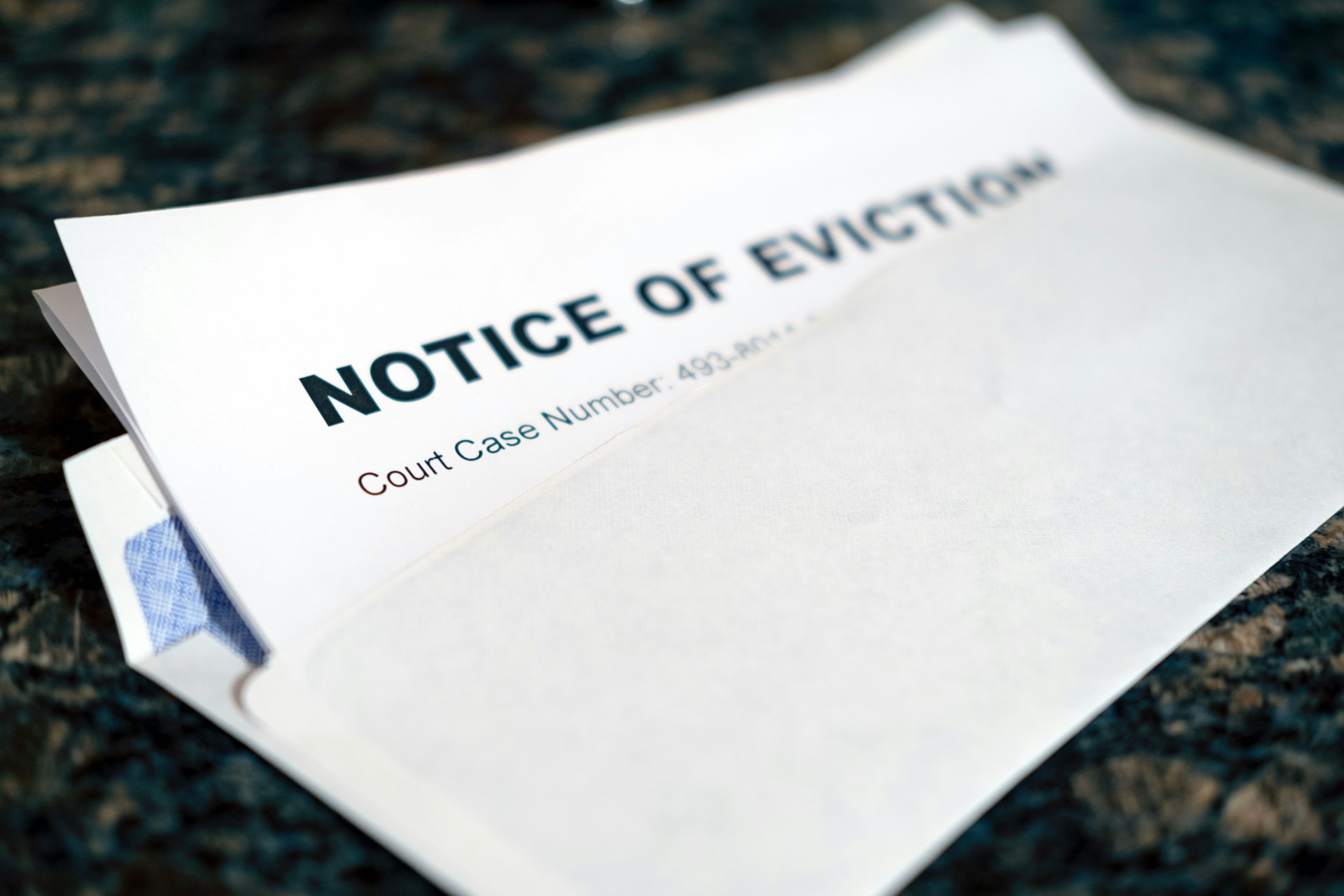On What Grounds Can a Landlord Evict a Tenant?

Estimated reading time 7 minutes
Evictions are never a pleasant process to go through. For both the tenants and landlords, it can be an uncomfortable and awkward time. There are occasions, though, when it’s welcome. If tenants have been particularly difficult or neglected the terms of their contract, a landlord can often breathe a sigh of relief when this chapter of their landlord story comes to an end.
Evictions cannot simply be dished out because a landlord is looking for a change. There must be specific legal grounds to justify eviction. These could be brought on by a Section 8 or Section 21 notice. Each has different reasons for being used, and as you’ll find out below, with Section 21 evictions due to be abolished, tenants will soon have more security with their tenancy.
Can a landlord evict a tenant?
Yes – however, landlords cannot simply evict tenants for the sake of it. There must be legal grounds to do so. Should there be a reason for eviction that is deemed legal, a landlord will have to serve a Section 8 or Section 21 notice. In some cases, both notices can be served, but it is more common to use one or the other. These notices only apply to assured shorthold tenancy agreements.
If the tenancy started before 27th February 1997, the tenants may hold an assured or regulated tenancy. The rules for evicting tenants in this case would be different. Those on a regulated tenancy, for example, would need to be served with a court order for an eviction to proceed. Even after that, it’s down to the court to decide if eviction is reasonable.
What is a section 21 notice?
A section 21 notice is used by landlords when they look to evict tenants without giving a specific reason to do so. To some, this sounds a little harsh, but it is commonly used when a fixed-term tenancy is ending or when a periodic tenancy is in place.
Landlords must give two months' notice when serving a Section 21, but the notice period can be longer if a periodic tenancy is in place. With a fixed-term tenancy, the landlord can only serve a Section 21 if the tenancy is ending. Should the tenancy be periodic, they can give notice at any time after the fixed term without giving a reason.
Section 21 evictions cannot be used when:
- The tenancy is less than four months old, or a fixed term has not ended
- If the house is an HMO, but there is no HMO license in place
- If the tenancy started after April 2007, and the deposit has not been put into a deposit protection scheme
- If fees collected by the landlord that are unlawful have not been repaid to the tenants
- The council have served notice within the past six months that it will do emergency work on the property
Furthermore, a landlord must ensure that a valid EPC, the gas safety certificate and the How to Rent guide have been provided for a Section 21 to be valid. This will soon be a thing of the past, though, as Section 21 is set to be abolished by the end of 2025. This means that only Section 8 evictions will be possible, giving more security to tenants, as there will need to be specific grounds for eviction.
What is a Section 8 notice?
A Section 8 can run alongside a Section 21 in some cases, but it is frequently used on its own. Once Section 21 is abolished, evictions will only be issued via Section 8.
Section 8 notices are used when a tenant has breached their tenancy agreement. Breaches can vary but typically include:
- Rent arrears
- Subletting
- Anti-social behaviour
- Damaging the property
- Persistently late rent payments
A Section 8 can also apply if a landlord wishes to move into the property, although this only applies when a landlord has previously lived in the property. If they have not lived there before, it is not possible to issue a Section 8.
What are the legal grounds for evicting a tenant?
There are various legal grounds in which a landlord can evict a tenant. Whilst many of these are listed above, there are others that tenants and landlords should be aware of.
We’ve included many of the common legal grounds for evicting tenants below:
- The property has fallen into disrepair
- There are needs for a major repair or development to the property
- The tenant has accrued rent arrears
- The tenant has caused damage to the property beyond general wear and tear
- The tenancy was offered as accommodation due to employment by the landlord, and the employment has ended
- Anti-social behaviour
- Consistently late rent payments
- The property is being repossessed from the landlord
- False or misleading information was provided when signing the lease agreement
- The landlord needs to live in the home
What is the landlord-tenant eviction process?
Before trying to evict a tenant, a landlord must find legal grounds for doing so. Without there being a justifiable reason, the tenant could look to quash the eviction and even seek damages.
A landlord can be found guilty of harassing or illegally evicting a tenant should they not have sufficient grounds to terminate the tenancy.
The processes for eviction are slightly different depending on whether a Section 8 or Section 21 has been served.
Eviction process for a Section 8 notice
If you discover your tenants can be served with a Section 8 and you wish to act upon it, you must complete Tenancy Form 3, “Notice seeking possession of a property on an assured tenancy.”
You’ll then need to serve notice of between 2 weeks and 2 months, depending on which term of the agreement has been broken. The guidance on the gov.uk website demonstrates how much notice is required per breach.
You’ll need to keep proof that notice has been served. You can do this by:
- Completing the N215 form
- Write “served by (your name) on (date)” on the notice
Should the tenants refuse to leave, your N215 or notice can then be used to apply for a possession order or an accelerated possession order. The latter can only be applied where a Section 21 has been used and not when there are rent arrears.
With Section 8 evictions, both parties have their say in court, meaning that occasionally, the tenant may be able to argue against the eviction and win. That is why it is particularly important to make sure a breach of the agreement has been committed before proceeding.
Eviction process for a Section 21 notice
When issuing a Section 21, you can use the form 6a from the gov.uk site or write your own as long as it contains the information you would use on the form.
With a Section 21, you must give at least 2 months’ notice. However, if a contracted periodic tenancy is in place, you may need to serve a longer notice period. This is where a fixed-term tenancy has ended but includes a clause for it to continue as a periodic tenancy. The notice period must be the same as the rental period if it is longer than 2 months.
Section 21 evictions don’t normally go to court, unless the tenants dispute the eviction and have reason to doubt its legitimacy. In most cases, due to Section 21 relating to the conclusion of a fixed-term agreement, the paperwork is simply reviewed and signed off.
If you are a landlord and think it’s time to sell up, perhaps due to issues with tenants or a simple wish to leave the world of property behind, speak to us. Our team at Bettermove makes it quick and easy to sell a tenanted property, and with our sell house fast method, you can do so in just seven days. Contact us today to see how simple it can be.



